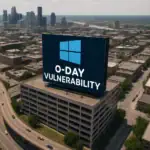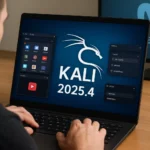A significant security alert has emerged as The Shadowserver Foundation reveals that more than 12,000 GFI KerioControl devices remain exposed to a critical Remote Code Execution (RCE) vulnerability, despite an available patch released in December 2024. This widespread exposure presents substantial risks to corporate networks and infrastructure worldwide.
Understanding CVE-2024-52875: A Critical Security Threat
Security researcher Egidio Romano identified this high-severity vulnerability, designated as CVE-2024-52875. The technical assessment reveals a critical flaw in the handling of the ‘dest’ GET parameter, enabling HTTP Response Splitting attacks that can lead to cross-site scripting (XSS) and remote code execution. This vulnerability’s severity is particularly concerning due to its potential for unauthorized system access and code execution capabilities.
Global Impact and Vulnerability Distribution
The geographical distribution of vulnerable KerioControl devices spans multiple continents, with significant concentrations in:
– Iran
– United States
– Italy
– Germany
– Russia
– Kazakhstan
– Uzbekistan
– France
– Brazil
– India
Active Exploitation Attempts and Security Implications
Greynoise analysts have detected active exploitation attempts utilizing proof-of-concept (PoC) code targeting administrator CSRF token theft. The public availability of exploit code significantly elevates the risk profile, as it enables even less technically skilled threat actors to launch successful attacks against vulnerable systems.
Security Mitigation and Recommended Actions
Organizations using GFI KerioControl devices must prioritize updating to version 9.4.5 Patch 2, released on January 31, 2025. This update addresses CVE-2024-52875 and includes additional security enhancements. Security teams should implement the following measures:
– Immediate vulnerability scanning and device inventory
– Priority-based patch deployment
– Network segmentation for affected devices
– Enhanced monitoring for suspicious activities
The criticality of this vulnerability, combined with confirmed exploitation attempts, necessitates immediate action from security administrators. Organizations must conduct urgent security audits of their KerioControl implementations and expedite patch deployment to protect against potential network compromises. Delaying these essential security updates could expose organizations to significant cyber risks, including data breaches and unauthorized system access. The cybersecurity community continues to monitor this situation closely as new exploitation attempts emerge.






